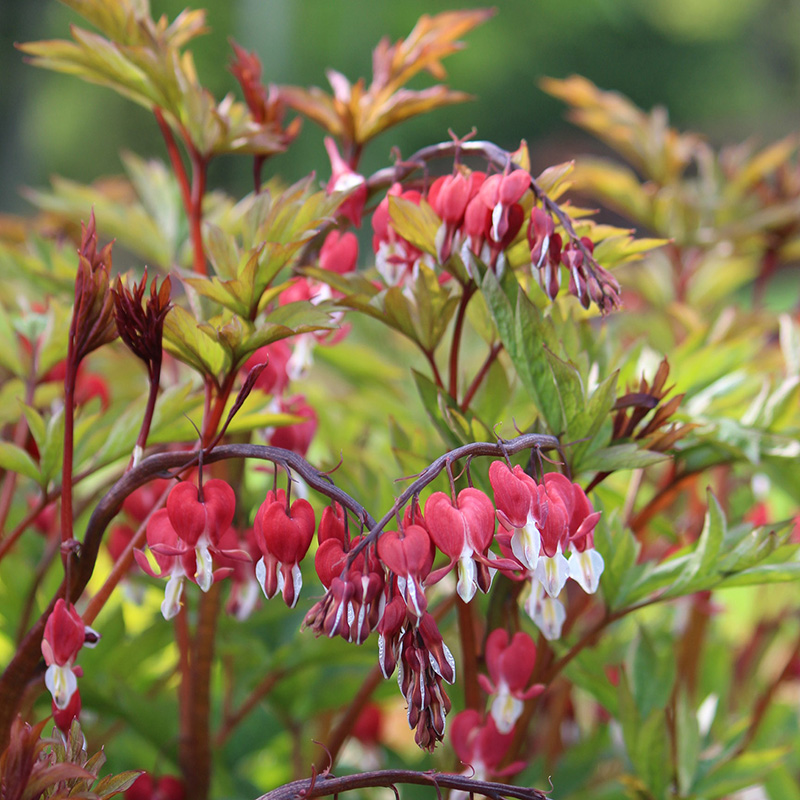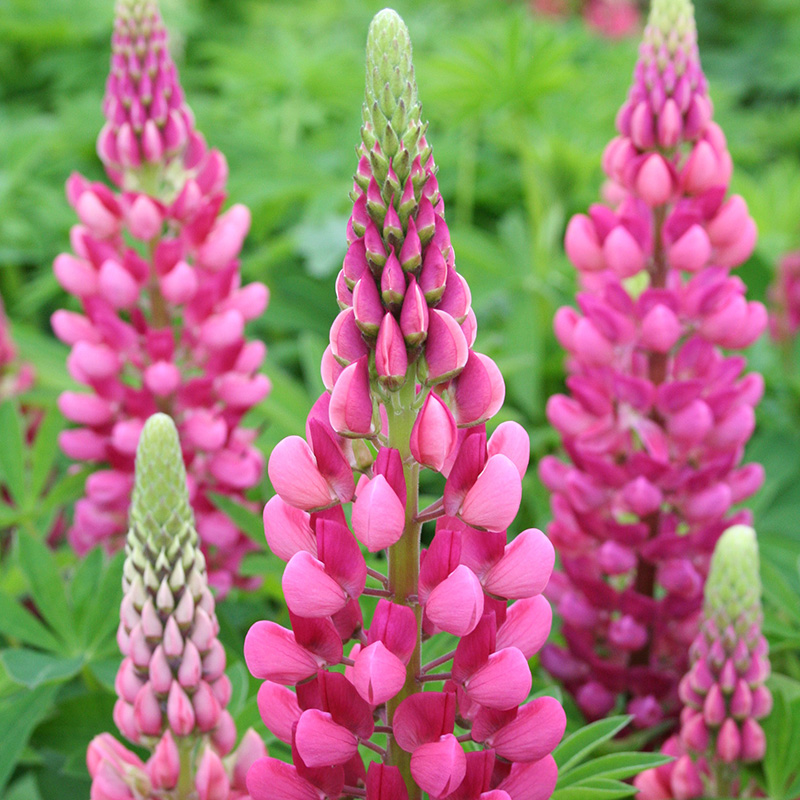Herbaceous Perennials
Herbaceous plants (in botanical use frequently simply herbs) are plants that have no persistent woody stem above ground. The term is mainly applied to perennials, but in botany it may also refer to annuals or biennials, and include both forbs and graminoids.
Annual herbaceous plants die completely at the end of the growing season or when they have flowered and fruited, and they then grow again from seed.
Herbaceous perennial and biennial plants may have stems that die at the end of the growing season, but parts of the plant survive under or close to the ground from season to season.
Geum ‘Flames of Passion’
Forms a compact rounded clump of dark green leaves. From early Summer wiry dark stems rise above the foliage and are topped by wonderful semi-double deep red flowers, frilly in appearance. A repeat-bloomer rewarding you right through to the Autumn. Garden plant for flowerbed in moist well-drained soil in full sun or partial shade. Good in beds, borders, cottage style gardens. Looks particularly well when planted in groups. Height and spread (approx) - 50cm x 45cm.















